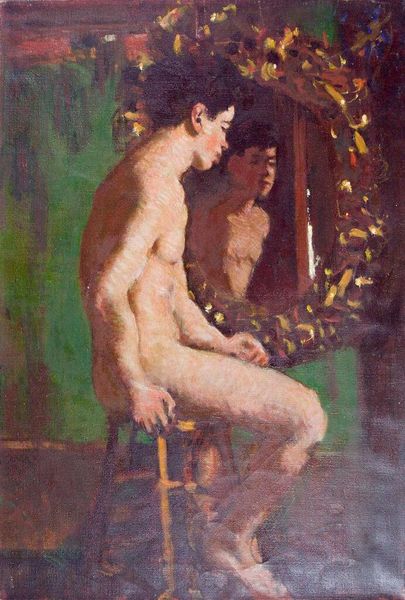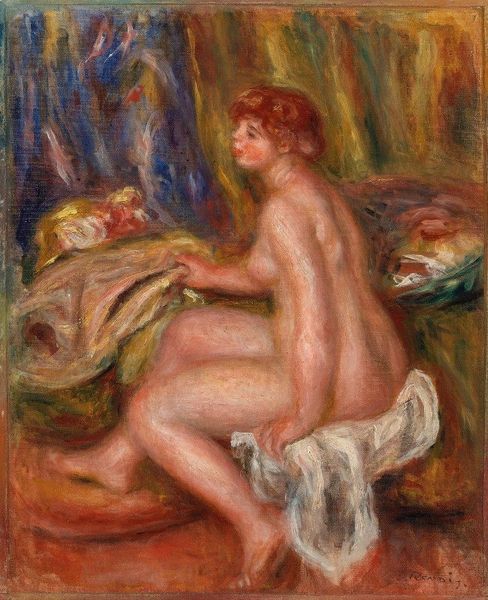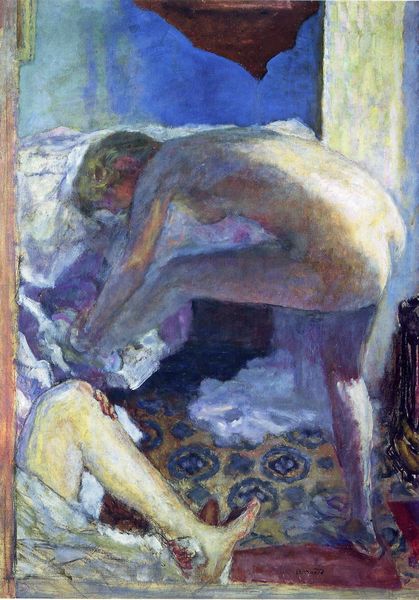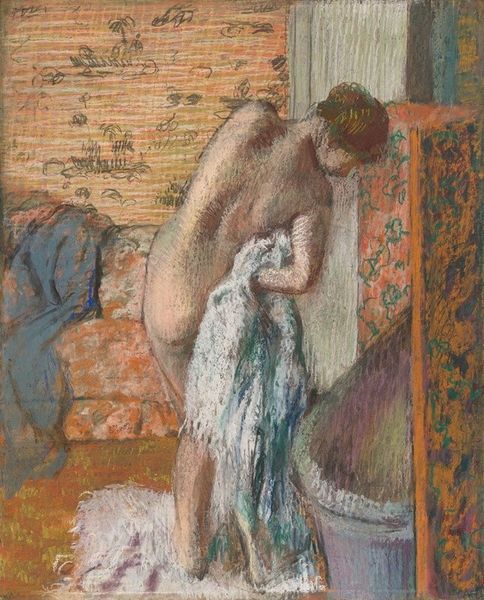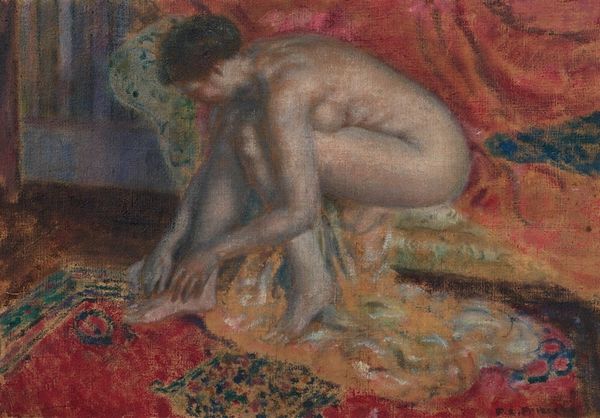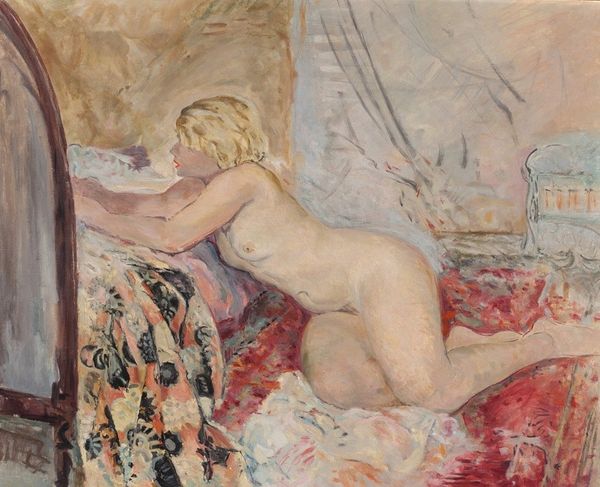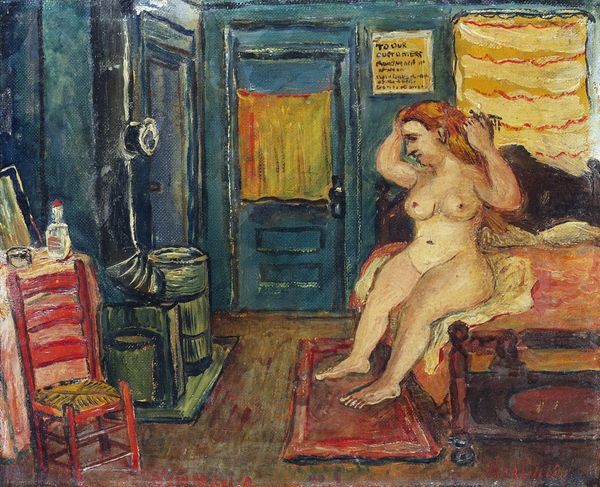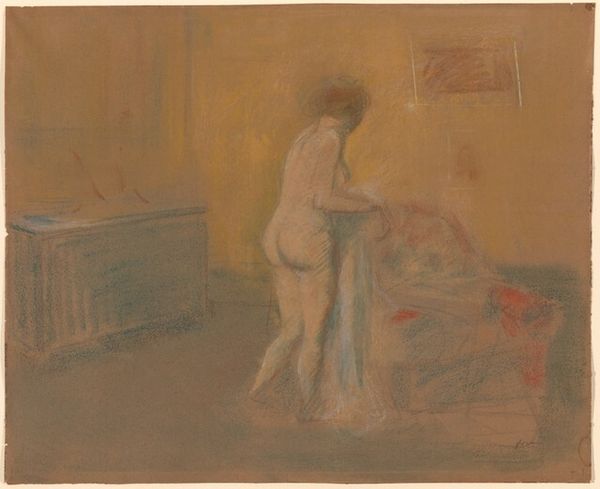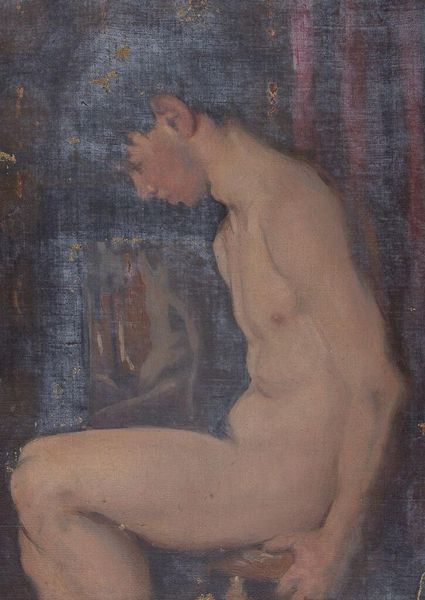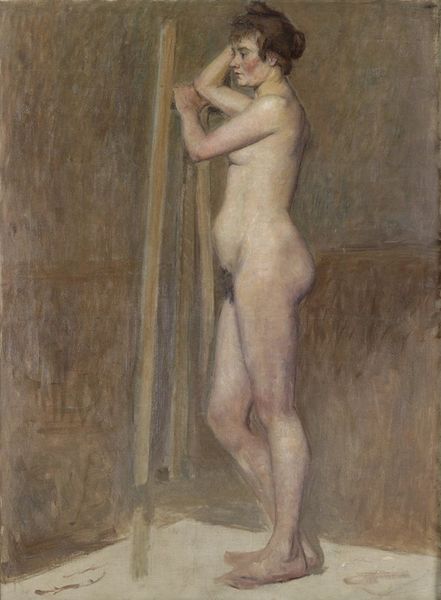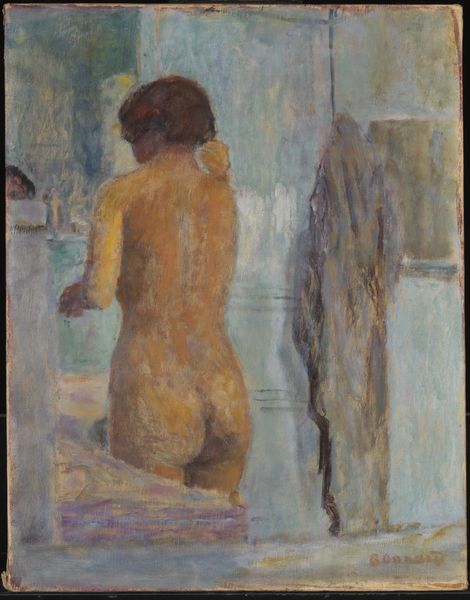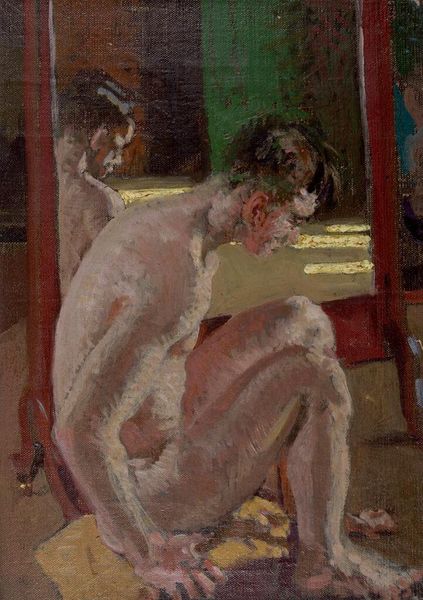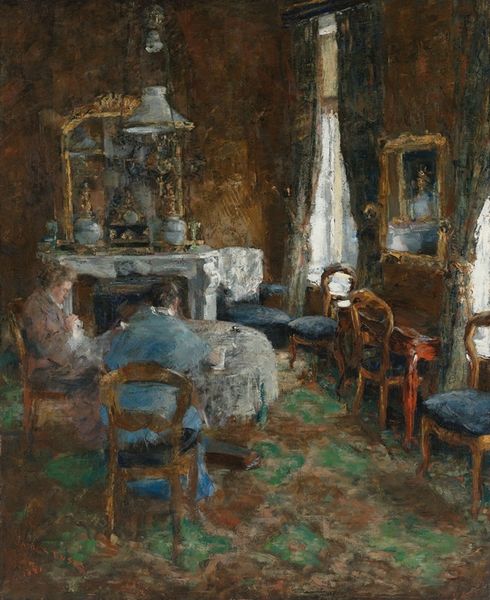
Copyright: Public Domain: Artvee
Editor: Here we have James Ensor's "Children at their Morning Toilet" from 1886, executed in oil paint. There's a certain unease that settles as I observe it; a hazy quality that feels both intimate and detached. What do you see in this piece, especially given its context? Curator: It's interesting you pick up on that unease. Ensor painted this during a time when genre scenes were heavily influenced by social realism and a focus on depicting the lives of ordinary people. However, Ensor subtly disrupts these conventions. Editor: How so? Curator: Look at the presentation of the children. They appear vulnerable, but also slightly distanced, almost like figurines placed within a constructed scene. This departs from a purely documentary approach. The space they occupy, with its flamboyant wallpaper and elaborate furniture, seems to overshadow their presence, turning a simple domestic scene into a staged tableau. Do you think the setting suggests a particular social class? Editor: Definitely bourgeois. The wallpaper especially makes it appear claustrophobic. So Ensor is making a comment about the performance of childhood, perhaps the way bourgeois families displayed their children? Curator: Precisely. And that uneasy feeling comes from this tension between private moments and public display, challenging the accepted norms and roles that define society and their depiction of children at that time. We often think about his later, more overtly critical paintings, but this earlier work subtly questions the ways societal norms were expressed through art. Editor: I hadn't considered it that way. It really pushes you to consider the societal context and assumptions behind what we're viewing. Curator: It's an example of how art reflects and can also subtly critique the world around it. Thanks for helping me examine Ensor's choices today!
Comments
No comments
Be the first to comment and join the conversation on the ultimate creative platform.

